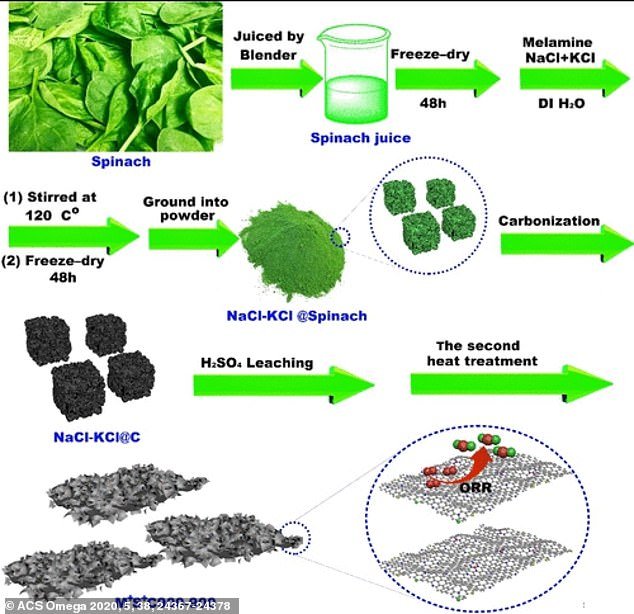Spinach, is not just good for human health, but for the environment as well. Researchers have found that Spinach, doesn’t just provide energy in humans but it also has the potential to help power fuel cells.
When converted from its leafy, edible form into carbon nanosheets, it acts as a catalyst for an oxygen reduction reaction in fuel cells and metal-air batteries.

Catalysts accelerate an oxygen reduction reaction to produce sufficient current and create energy.
Researchers have long known that certain carbon materials can catalyze the reaction. The AU researchers wanted to find an inexpensive and less toxic preparation method for an efficient catalyst by using readily available natural resources.
They tackled this challenge by using spinach which is renewable biomass.
The team created and tested the catalysts, which are spinach-derived carbon nanosheets. Carbon nanosheets are like a piece of paper with the thickness on a nanometer scale, a thousand times thinner than a piece of human hair.

To create the nanosheets, the researchers put the spinach through a multi-step process that included both low- and high-tech methods, including washing, juicing and freeze-drying the spinach, manually grinding it into a fine powder with a mortar and pestle, and “doping” the resulting carbon nanosheet with extra nitrogen to improve its performance.
The measurements showed that the spinach-derived catalysts performed better than platinum-based catalysts that can be expensive and lose their potency over time.
Among the practical applications for the research are fuel cells and metal-air batteries, which power electric vehicles and types of military gear.
Reference- American University media release, Science Direct, Hindustan Times,






